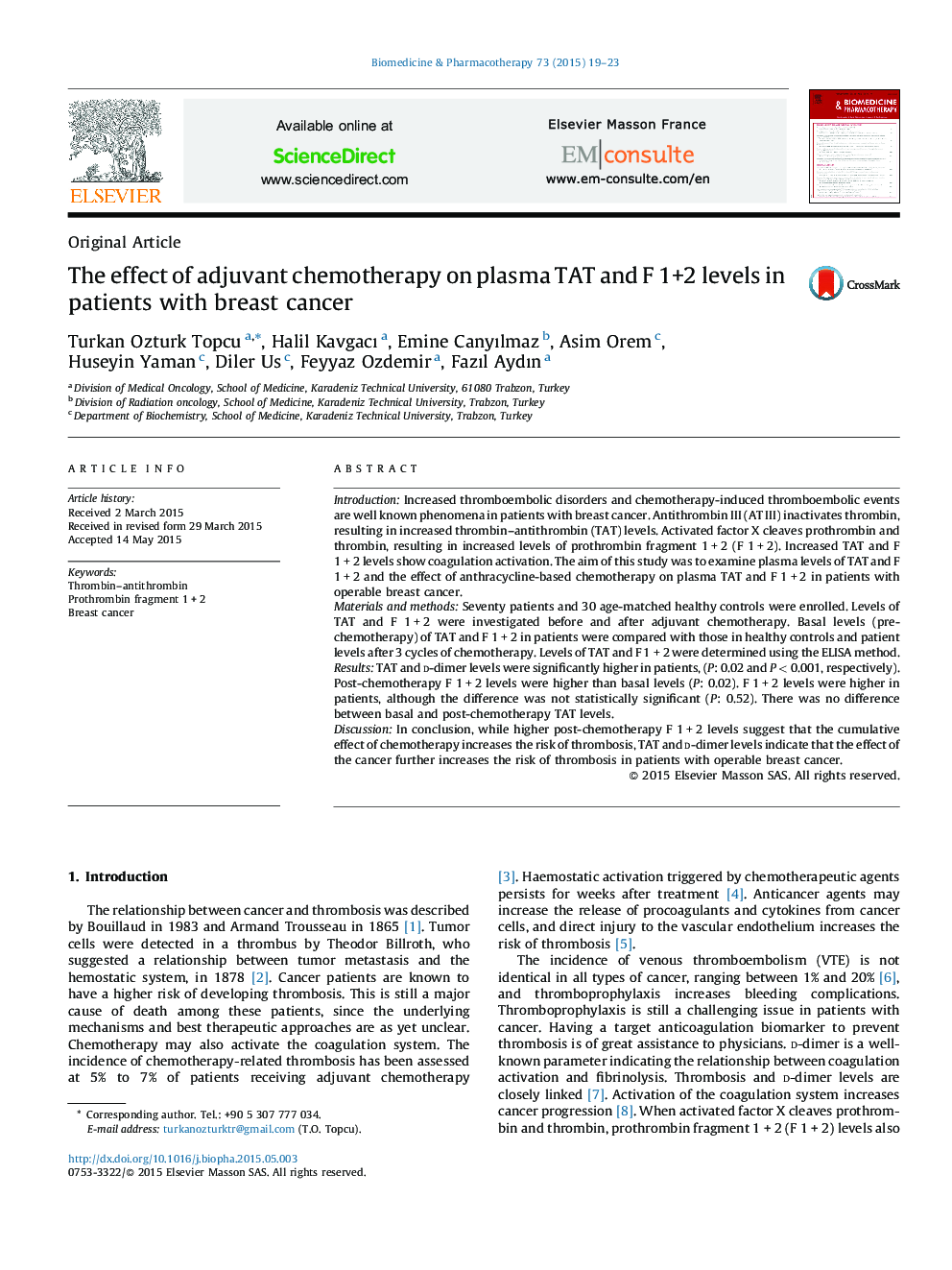| کد مقاله | کد نشریه | سال انتشار | مقاله انگلیسی | نسخه تمام متن |
|---|---|---|---|---|
| 2523842 | 1557969 | 2015 | 5 صفحه PDF | دانلود رایگان |

IntroductionIncreased thromboembolic disorders and chemotherapy-induced thromboembolic events are well known phenomena in patients with breast cancer. Antithrombin III (AT III) inactivates thrombin, resulting in increased thrombin–antithrombin (TAT) levels. Activated factor X cleaves prothrombin and thrombin, resulting in increased levels of prothrombin fragment 1 + 2 (F 1 + 2). Increased TAT and F 1 + 2 levels show coagulation activation. The aim of this study was to examine plasma levels of TAT and F 1 + 2 and the effect of anthracycline-based chemotherapy on plasma TAT and F 1 + 2 in patients with operable breast cancer.Materials and methodsSeventy patients and 30 age-matched healthy controls were enrolled. Levels of TAT and F 1 + 2 were investigated before and after adjuvant chemotherapy. Basal levels (pre-chemotherapy) of TAT and F 1 + 2 in patients were compared with those in healthy controls and patient levels after 3 cycles of chemotherapy. Levels of TAT and F 1 + 2 were determined using the ELISA method.ResultsTAT and d-dimer levels were significantly higher in patients, (P: 0.02 and P < 0.001, respectively). Post-chemotherapy F 1 + 2 levels were higher than basal levels (P: 0.02). F 1 + 2 levels were higher in patients, although the difference was not statistically significant (P: 0.52). There was no difference between basal and post-chemotherapy TAT levels.DiscussionIn conclusion, while higher post-chemotherapy F 1 + 2 levels suggest that the cumulative effect of chemotherapy increases the risk of thrombosis, TAT and d-dimer levels indicate that the effect of the cancer further increases the risk of thrombosis in patients with operable breast cancer.
Journal: Biomedicine & Pharmacotherapy - Volume 73, July 2015, Pages 19–23